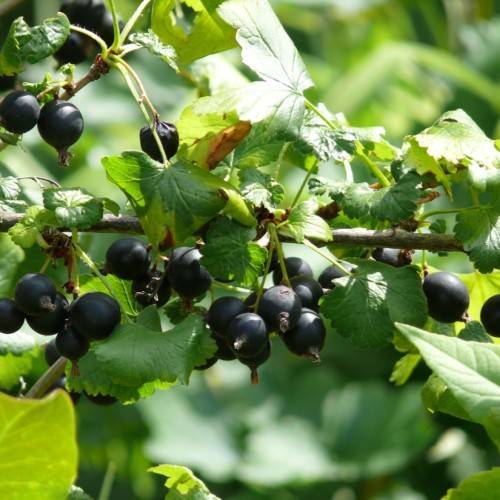
jostaberry
Ribes nidigrolaria
Cycle:
Perennial
Watering:
Average
Hardiness Zone:
3 - 8
Flowers:
Flowers
Sun:
Full sun,part shade
Fruits:
Fruits Ready In Summer
Edible:
Yes
Leaf:
Yes
Growth Rate:
Low
Maintenance:
Moderate
Drought Tolerant:
Yes
Salt Tolerant:
Yes
Care Level:
Medium
watering
For best results, Jostaberries should be watered deeply about every 10 to 14 days when temperatures are consistently below 80°F, and more often (every 7 days or more) when temperatures exceed 80°F. Spread 1 to 2 inches of organic mulch around the base of the plant to help reduce water evaporation from the soil. Be sure to water the plant early in the morning so it stays hydrated throughout the day. Avoid getting water on the leaves and stems, as this can cause fungal diseases.
sunlight
The optimal amount and timing of sunlight for jostaberry plants is 6 to 8 hours of direct sunlight each day. This species of plant is best grown in full sun, where it can receive direct sunlight for most of the day, particularly during the growing season. Jostaberry plants should be placed in an area that receives at least 6 to 8 hours of direct sunlight each day, however, they can tolerate partial shade for part of the day. The peak hours of sun, when the rays are the strongest, are usually between 11am and 3pm. It is best to avoid sun exposure during the hottest part of the day when the sun’s rays are the strongest, as this can cause scorching of the foliage.
pruning
Jostaberry (Ribes nidigrolaria) should be pruned in early summer when the plant has finished flowering. To begin pruning, trim dead or damaged branches and remove any shoots growing below the grafting line if applicable. Make sure no dead wood remains in the center of the plant. Prune back any shoots that are growing in an unruly or congested manner, making sure to not take too much at once. This will help to encourage the growth of new shoots and flowering. In the second year of growth, shaped prune the plant to your desired size. After that, yearly maintenance pruning should take place to remove any dead or damaged branches as well as any errant shoots. Remove the oldest and tallest branches to open up the center of the plant and allow for light and air circulation. Always be mindful of the direction and shape of the stem and the overall shape or form of the plant. Prune no more than 1 third of the branches each year and follow the natural shape of the jostaberry plant when making cuts.
